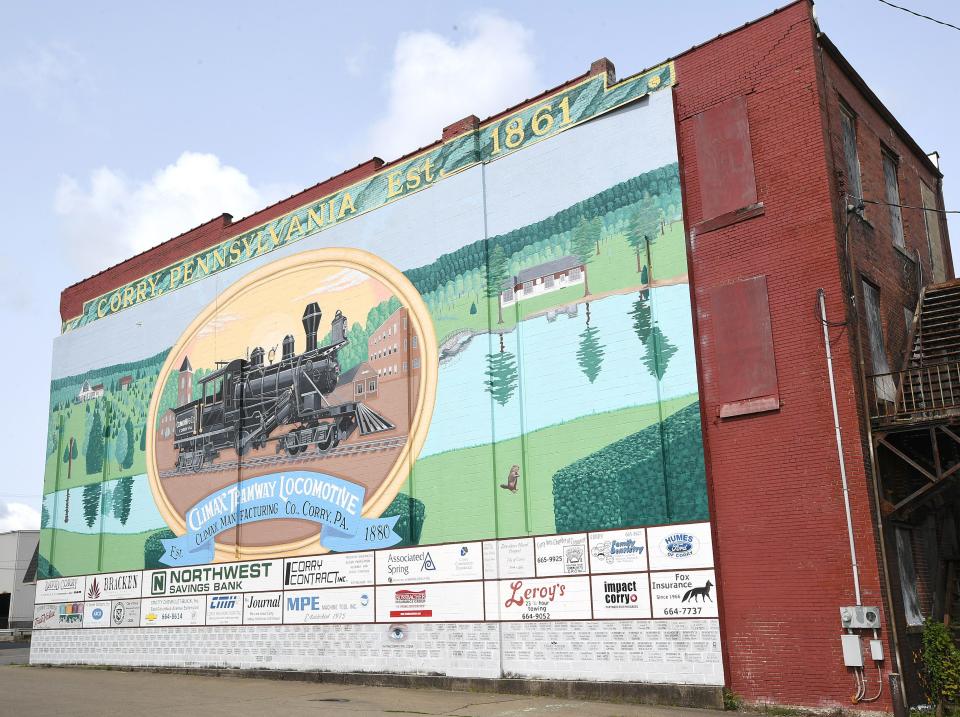The historic district in Downtown Corry is now on the National Register of Historic Places
Corry has a new ace in its deck for economic development.
The city's downtown historic district, including more than 200 buildings and properties, has been added to the National Register of Historic Places.
"This designation is an important step in celebrating our heritage and attracting visitors to our region," said Impact Corry Executive Director Chuck Gray. "Historic designation also is an amazing opportunity for owners of revenue-generating buildings to renovate and preserve those buildings with the help of historic preservation tax credits."
Building on history: Corry seeks National Register designation in 2019
Impact Corry coordinated community efforts for the National Register designation.
The National Park Service announced the National Register designation on Friday. The Corry historic district was officially added to the National Register on Monday, according to the announcement. The National Park Service oversees the National Register of Historic Places, which is a listing of historic places worthy of preservation.
In good company: Here are Erie County properties previously listed in the National Register of Historic Places
Marking time: Here's where you can find Pennsylvania historical markers throughout Erie County
The Corry historic district encompasses almost 83 acres and 272 buildings and other properties, including City Park, the U.S. Post Office building and the former state armory on Washington Street, the only individual Corry building already included on the National Register. The district extends roughly from Smith Street to Church Street and for a block or two blocks on either side of Center Street.
Homes in the historic district include Queen Anne, craftsman and bungalow styles built in the 1880s and 1890s. Italianate-style commercial buildings are also included in the district.
A number of buildings and homes in the historic district were designed by architect A.P. Mount, including the Ottaway Inn, originally Mount's home, as well as the Elks Club, Corry municipal building and the former Carnegie library.
More: Corry's Veil Maternity Hospital gives up secrets
History fueled by industry and transportation

Corry traces its roots to the drilling of the first commercial oil well in nearby Titusville in 1859 and the later convergence of the Atlantic and Great Western Railroad and the Sunbury and Erie Railroad in what today is the city's downtown. The railroads were built to carry oil to markets along the East Coast.
Railroad agents named the junction for Hiram Cory, who sold land for the railroads, according to the historic survey for the project.
The National Register listing recognizes that early history, Gray said.
"The historic designation is not just for the quality of housing and buildings downtown but also for the boomtown experience of many cities in the region," Gray said.
More: Corry's historic Hillstrom mansion, built in 1929 for entrepreneur, on the market
The historic district also shows how the city grew and changed over the years, said Laura Ricketts, the consultant who prepared the National Register nomination.
"The historic district demonstrates the evolution of the city from its founding at the site of an important railroad junction through its development as a regionally prominent transportation hub and industrial center," Ricketts said.
After the railroads were built in 1861, businesses and workers followed. Early industries included Raymond Manufacturing, now Associated Spring, and Corry Metal Products Company, now Corry Contract, both located in the historic district.
Seeking National Register designation: Girard plans to leverage the past to revitalize its downtown
Corry was incorporated as a borough in 1863 and as a city in 1866.
The community has been working toward National Register designation for Corry's downtown for some years.
"It's an amazing outcome for what basically was a 20-year community endeavor," Gray said. "The community looked at making the city center, Mead Park and other areas a historic district, and at making multiple historic districts. There were a lot of great ideas and community commitment, not only for planning but in raising money to hire consultants to collect the materials necessary."
Those materials now include a kind of biography for each property in the historic district. The information was included in the Corry downtown historic survey commissioned by Impact Corry and compiled by Markosky Engineering Group, a Ligonier consulting firm, in 2018.
The survey was funded by a $12,000 Keystone Historic Preservation Grant and matching funds from the Erie County Gaming Revenue Authority and Corry Community Foundation.
It was submitted to the Pennsylvania Historic Preservation Board for consideration. The board on Feb. 1 unanimously recommended the Corry Historic District to the National Park Service for National Register designation.
Related: What to do with an empty hospital building? Impact Corry has a plan
Contact Valerie Myers at vmyers@timesnews.com. Follow her on Twitter @ETNmyers.
This article originally appeared on Erie Times-News: Corry historic district now on National Register of Historic Places

